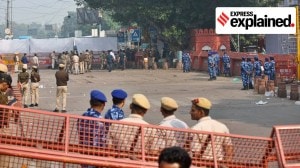French fries
There's something about India that makes every western journalist worth his or her salt reach for the pepper. Formidable bylines from Old ...

There’s something about India that makes every western journalist worth his or her salt reach for the pepper. Formidable bylines from Old Blighty or the Big Apple, dispatched to file “colour” stories from this part of the world, have lived off India’s snake charmers and two-headed calves, whirling dervishes and dowry deaths, “sadhoos” and village fairs. For decades, in fact. In the meanwhile, the country may have mo-ved on. But something in the great collective consciousness of the international media resists the registering of change. Some honourable exceptions apart, it prefers to stereotype rather than to study; swoop on the exotic and leave the reality untouched. The blaring Le Figaro headline, Un intouchable a l’Elysee (an untouchable at the Elysee Palace), for a story on President K.R. Narayanan’s current visit to France, should therefore come as no surprise. It betrays an old, familiar mindset.
Call it the great cultural divide, the inevitable sideshow amidst the clash of civilisations, but some journalistic genius out there decided that the only way French readers could be persuaded to look up from their morning coffee-and-croissants and read about the visit of the Indian president was to spice up the news item in this fashion. The news copy that followed the headline was not much better. While commending Narayanan’s glorious rise to becoming the President, it rued the fact that “150 million Indian untouchables are as far from power as ever”. That is indeed the case, but what is not recognised is that this country has witnessed some memorable struggles against the obnoxious hierarchies of caste; that Indian democracy, at its best, has recognised and responded to the terrible legacy of caste persecution. But is Le Figaro seriously interested in all this? Not really.
But there is an additional aspect to this controversy that bears scrutiny. Must a nation of one billion really get hot under the collar for the indiscretions of a French newspaper? Would it not have been far wiser, indeed far more commendable, to have ignored it? Ministry of External Affairs should have taken its cue from President Na-rayanan’s dignified stand of ignoring the issue completely and carrying on. Instead, Minister of state for External Affairs demanded that the Indian embassy should ensure that the writer of the article “apologise for it since it was in bad taste”. This is overreaction, pure and simple. It is important to view a deviant headline or slanted copy in their proper perspective and react to them with maturity and poise. In any case, Le Figaro has apologised since then. It has assured President Nara-yanan that “it was certainly not our intention to hurt you or be disrespectful to you: in fact, quite to the contrary…” The apology must be accepted with grace and the incidentforgotten.



- 01
- 02
- 03
- 04
- 05




























